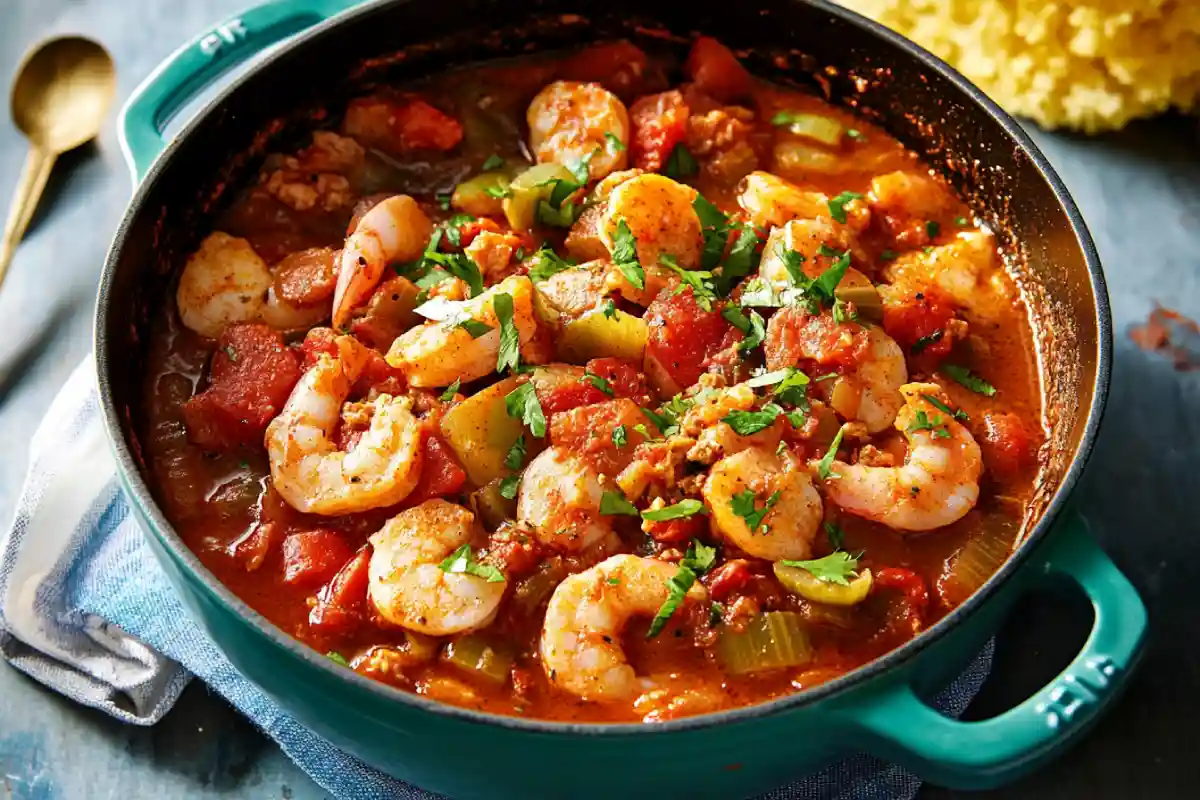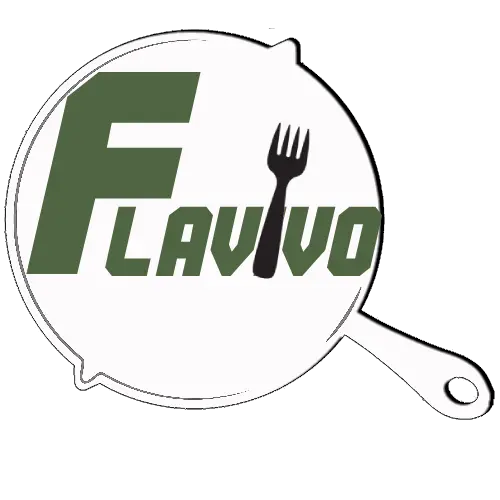
Table of Contents
Lost in a sea of Cajun stew names like courtbouillon, fricassée, and maque choux? I combed 19th-century Cajun cookbooks and cooked eight pots in one week to decode which stews use dark roux, tomato, or okra. Your quick glossary starts below.
What is Cajun Style?
To fully appreciate Cajun stew names, it’s helpful to understand what Cajun style cooking really means. Unlike many modern culinary fads, Cajun food isn’t just about flavor—it’s about heritage. In fact, this style was born from necessity and resourcefulness.
Cajun style cooking originated with the Acadians, French-speaking settlers who were expelled from Canada in the 18th century. Upon arriving in Louisiana, they adapted their recipes to suit the ingredients available in the swamps and bayous. As a result, dishes became hearty, simple, and incredibly flavorful.
Moreover, traditional Cajun cooking is almost always done in one pot. This method allows flavors to build and intensify, which is why stews like gumbo and étouffée are so beloved. Typically, the foundation includes:
- The “holy trinity” of vegetables: onion, celery, and bell pepper
- A dark roux (a mix of flour and fat cooked to a deep brown)
- Spices such as cayenne pepper and paprika for heat and depth
Because Cajun dishes are rich in story and soul, they’ve become a staple not just in Louisiana, but around the world. According to the Louisiana State Museum, the techniques and ingredients used in Cajun cooking reflect a vibrant fusion of French, Spanish, African, and Native American cultures.
Want to experience a real Cajun dish at home? Check out this flavorful Cajun Shrimp Étouffée Recipe from Flavivo Recipes. It’s a fantastic starting point if you’re curious to explore beyond Cajun stew names and dive into full Louisiana flavor.
Key Elements of Cajun Cuisine
Understanding the building blocks of Cajun cuisine is essential when exploring Cajun stew names. While every region in Louisiana may have its own twist, certain ingredients and techniques remain central to authentic Cajun cooking. These core elements are what make every bite rich, layered, and deeply satisfying.
First and foremost, flavor in Cajun dishes begins with a solid base. Nearly every recipe starts with a roux—a mixture of flour and oil cooked to a deep brown color. Not only does this add thickness, but it also brings a nutty, toasted flavor that defines many stews.
Secondly, the famous Cajun Holy Trinity cannot be overlooked. Much like the French mirepoix, this blend includes:
- Onions
- Celery
- Green bell peppers
Together, they create the aromatic core of Cajun stews, infusing each dish with a savory depth that’s hard to replicate.
Moreover, spice plays a significant role in both the heat and complexity of flavor. You’ll often find:
- Cayenne pepper
- Black pepper
- Paprika
- Garlic powder
- Bay leaves
- Thyme
For a deeper look at how to season like a local, this guide on Cajun Seasoning for Gumbo breaks down the essential spice blends.
Finally, Cajun cuisine is rooted in simplicity and tradition. Meals are typically one-pot dishes, simmered slowly to allow flavors to meld beautifully. Because of this, Cajun stew names often reference the process or ingredients, making them both descriptive and meaningful.
Whether it’s gumbo, étouffée, or courtbouillon, these stews all share a foundation of bold flavor, resourceful technique, and cultural pride.
Popular Cajun Stew Names and What They Mean
Whether you’re a Louisiana local or just discovering the charm of Southern cooking, you’ll quickly realize that Cajun stew names are more than just labels—they’re an introduction to deep-rooted traditions. Each name tells a story, shaped by culture, ingredients, and history.
Let’s take a closer look at the most iconic stews you’ll encounter in Cajun cuisine.
Gumbo
No list of Cajun stew names would be complete without gumbo. This iconic stew is a rich, hearty dish that varies widely depending on the region. Some versions highlight seafood, while others focus on sausage or chicken.
- Built on a dark roux and the “holy trinity” of vegetables
- Thickened with either okra or filé powder
- Served hot over rice
- Offers both Cajun and Creole versions
To explore even more regional favorites like gumbo, take a look at this curated collection of Louisiana Dishes Recipes.
Étouffée
Meaning “to smother” in French, étouffée is a smoother, silkier stew often made with crawfish or shrimp. It’s a gentler dish than gumbo but no less flavorful.
- Uses a blonde roux for a lighter texture
- Rich with shellfish and Cajun spices
- Often served with white rice and crusty bread
Fricassée
This homestyle stew is commonly made with chicken, rabbit, or even squirrel. The slow-cooked roux brings out deep, earthy notes.
- Includes dark roux and meat browned for flavor
- Often contains potatoes and vegetables
- Cooked low and slow for tenderness
Courtbouillon (coo-bee-yon)
This bold, tomato-based fish stew is tangy, spicy, and distinctly Cajun. It’s one of the most vibrant Cajun stew names in flavor.
- Features fish like catfish or red snapper
- Cooked in a tomato and spice base
- Served hot with a scoop of white rice
These stews are more than just meals—they’re cultural experiences served in bowls. Because of their distinct taste and story, Cajun stew names continue to hold a special place in Southern kitchens and beyond.
Lesser-Known Cajun Meat Dishes Served as Stews
While gumbo and étouffée may dominate headlines, several lesser-known dishes also deserve attention when discussing Cajun stew names. These hearty, flavorful stews highlight the diversity and depth of Cajun cuisine, showcasing everything from wild game to smoked chicken.
Let’s explore a few underrated, yet deeply traditional, meat-based stews in Louisiana cooking.
1. Sauce Piquante
This bold, tangy stew uses a tomato base and is known for its spicy kick. It’s often made with alligator, turtle, or chicken, depending on what’s available.
- Tomato-rich and highly seasoned
- Slow-cooked for deep flavor
- Commonly served over white rice
2. Smothered Dishes (Gravy Stews)
Not all Cajun stews are heavy on broth. Some are served “smothered” in rich, flavorful gravies made from pan drippings and roux.
- Popular meats include rabbit, turkey necks, and chicken
- Usually cooked with onions, garlic, and bell peppers
- Always served with rice or cornbread
3. Grillades and Grits
Though often considered a breakfast item, grillades (slices of beef or veal) are simmered in gravy until tender, creating a stew-like dish.
- Typically eaten with creamy grits
- Full of peppery, smoky flavors
- Ideal for weekend brunch or dinner
Stew Comparison Table
| Dish | Main Meat | Base Flavor | Common Pairing |
|---|---|---|---|
| Sauce Piquante | chicken/ Alligator | Tomato & Pepper | White Rice |
| Smothered Rabbit | Rabbit / Turkey Necks | Onion Gravy | Rice / Cornbread |
| Grillades & Grits | Beef / Veal | Tomato-Roux Gravy | Creamy Grits |
Modern Cajun Plates Featuring Stews
Although rooted in history, Cajun stew names have made their way into modern dining culture. Today, you’ll find these comforting dishes featured on trendy restaurant menus and even reimagined for gourmet presentations. Nevertheless, they still retain the same core flavors that made them Louisiana staples.
In fact, many chefs now pair traditional stews with elevated sides or serve them in unique formats. As a result, these dishes continue to evolve while still honoring their origin.
Here are some of the most common ways you’ll see stews featured on modern Cajun plates:
- Gumbo Flights: Small tasting bowls of different gumbo variations (seafood, chicken & sausage, vegetarian)
- Grilled Cornbread Pairings: Stews like étouffée or fricassée served with slices of char-grilled cornbread
- Stew-Stuffed Pistolettes: Mini French rolls filled with creamy crawfish étouffée or spicy sauce piquante
- Stew Bowls with Dirty Rice: Classic Cajun stews served over bold, seasoned rice instead of plain white
Sample Cajun Plate Styles
| Dish | Modern Twist | Common Side |
|---|---|---|
| Shrimp Étouffée | Served in a sourdough bread bowl | Grilled cornbread |
| Chicken & Sausage Gumbo | Topped with scallions & okra crisps | Dirty rice |
| Courtbouillon | Pan-seared catfish added on top | Creole tomato salad |
| Sauce Piquante | Featured in tacos or sliders | Cajun-spiced fries |
FAQs – Cajun Stews Answered
What is a Cajun stew called?
The most iconic Cajun stew is gumbo. However, depending on the ingredients and method, other names such as étouffée, fricassée, and sauce piquante are also used. Each name reflects a different style of cooking, though all fall under the umbrella of cajun stew names.
What are traditional Cajun dishes?
Traditional Cajun dishes often include one-pot meals that are rich, spicy, and comforting. Some popular examples include:
Gumbo – A hearty stew thickened with a roux and flavored with sausage, seafood, or chicken
Jambalaya – A rice-based dish cooked with meat
Maque choux – A smothered corn and vegetable dishWhat is another name for Cajun soup?
In most cases, gumbo is considered the Cajun version of soup. However, courtbouillon, which is a tomato-based fish stew, is also a close contender. While these dishes are more robust than typical soups, they are often grouped under the same category due to their comforting, brothy base.
What is a Cajun seafood stew called?
A Cajun seafood stew is usually referred to as seafood gumbo. This version includes shrimp, crab, crawfish, and sometimes oysters. In coastal regions, you may also come across shrimp étouffée, which is smoother and thicker but equally flavorful.
Conclusion
In the vibrant world of Louisiana cuisine, cajun stew names offer more than just a way to identify what’s on the plate—they represent culture, family, and history. From gumbo and étouffée to courtbouillon and fricassée, each name carries the flavor of generations past. These dishes are not only packed with bold spices and slow-cooked richness, but they also reflect the resilience and creativity of the Cajun people.
As you explore Cajun cooking, understanding the meaning behind these names helps you connect more deeply with the food itself. Although the ingredients may vary, and cooking methods might adapt over time, the heart behind every dish remains constant. Moreover, even in modern kitchens, where fusion and innovation are on the rise, these traditional stew names are still respected and preserved.
Whether you’re tasting gumbo for the first time or perfecting your own pot of sauce piquante, knowing the roots of these cajun stew names brings a deeper level of appreciation. It’s not just about what’s in the bowl—it’s about the stories, the people, and the pride behind every recipe. So, the next time you see a name like fricassée or étouffée on a menu, you’ll know you’re about to experience more than a meal—you’re about to enjoy a taste of Louisiana’s soul.
